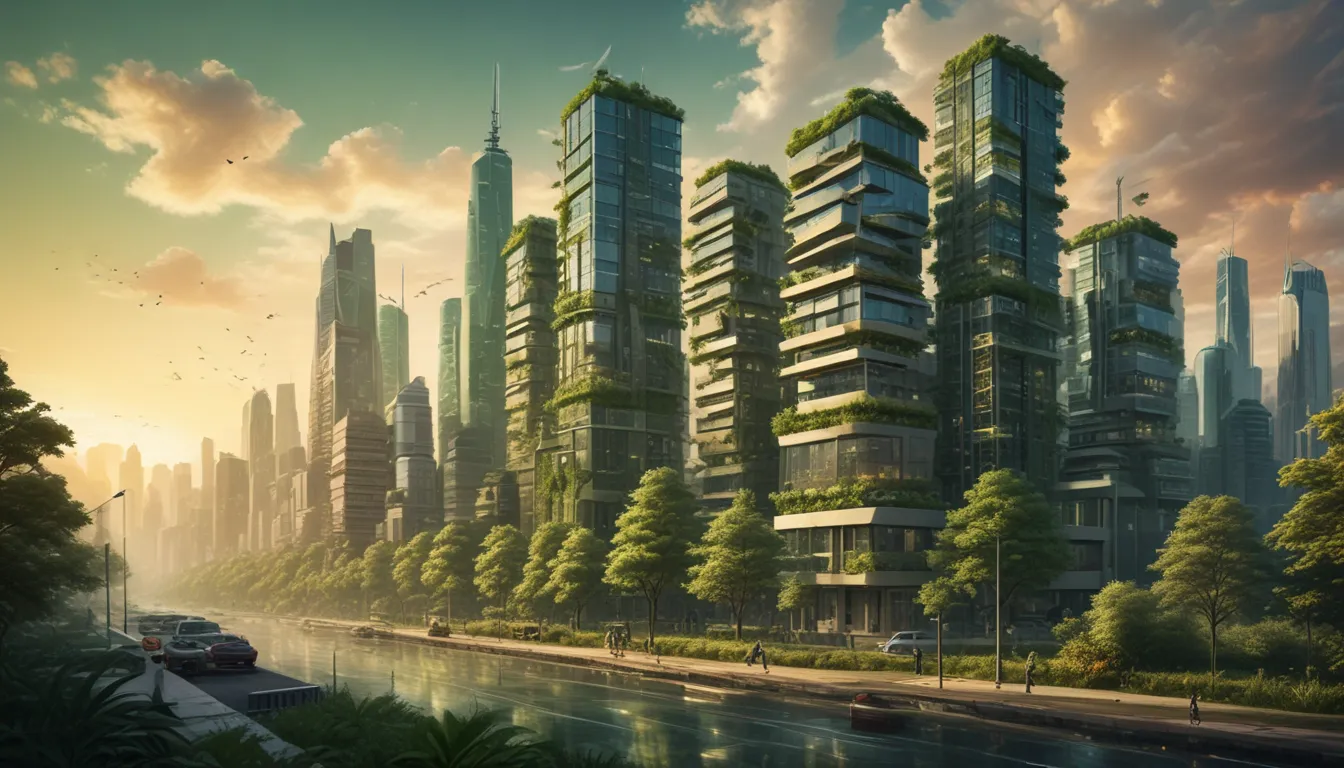A Note About Images: The images used in our articles are for illustration purposes only and may not exactly match the content. They are meant to engage readers, but the text should be relied upon for accurate information.
In today’s world, the concept of green cities is gaining momentum as more individuals recognize the importance of protecting the environment and promoting sustainability. Green cities prioritize eco-friendly practices, renewable energy sources, and the preservation of green spaces to create a holistic approach to urban living. This article delves into 12 intriguing facts about green cities, shedding light on the remarkable efforts being made to shape greener and more livable urban environments. Let’s explore the fascinating world of green cities and discover how they are paving the way for a brighter and more sustainable future for all.
Key Takeaways:
- Green cities embrace sustainable practices like green roofs, urban farming, and renewable energy to create a healthy and eco-friendly environment for everyone.
- By promoting cycling, efficient public transportation, and eco-friendly building designs, green cities are leading the way in creating a more sustainable and livable future for all.
Green Roofs: Bringing Nature to the Cityscape
Green roofs are becoming increasingly popular in green cities. These environmentally-friendly rooftops are covered with vegetation, acting as natural insulators, reducing energy consumption, and mitigating stormwater runoff.
Urban Farming: Cultivating Sustainability in the City
Green cities thrive on urban farming, where vacant lots, rooftops, and vertical spaces are transformed into productive agricultural areas. This promotes local food production, reduces carbon footprints associated with transportation, and improves community nutrition.
Efficient Public Transportation: Driving Towards Sustainability
Efficient public transportation systems are a key feature of green cities. These systems reduce reliance on private vehicles, encouraging the use of buses, trams, and trains, which helps to reduce traffic congestion and air pollution.
Embracing Renewable Energy: Harnessing Nature’s Power
Green cities prioritize the use of renewable energy sources such as solar and wind power. These clean energy alternatives help reduce greenhouse gas emissions, combat climate change, and promote energy independence.
Promoting Cycling: A Greener Mode of Transportation
Green cities promote cycling by implementing bike-friendly infrastructure, dedicated lanes, and bike-sharing programs. This not only encourages physical activity but also reduces traffic congestion and improves air quality.
Integrated Green Spaces: Nature’s Oasis in the Urban Jungle
Green cities prioritize the integration of green spaces like parks, gardens, and urban forests into urban environments. These spaces provide recreational areas for residents, enhance biodiversity, reduce urban heat island effect, and improve mental well-being.
Eco-Friendly Building Designs: Sustainable Structures for a Greener Tomorrow
Green cities emphasize sustainable building practices, including the use of eco-friendly materials, energy-efficient design, and proper waste management. These measures result in reduced energy consumption, lower carbon emissions, and healthier indoor environments.
Rainwater Harvesting: A Sustainable Water Solution
In green cities, rainwater harvesting systems are implemented to collect and store rainwater for non-potable uses such as irrigation and toilet flushing. This helps conserve water resources and reduce demand on water supply infrastructure.
Green Infrastructure for Stormwater Management: Nature’s Solution to Urban Flooding
Green cities utilize green infrastructure solutions like rain gardens, bioswales, and permeable pavements to manage stormwater runoff. These nature-based systems help reduce flooding, filter pollutants, and recharge groundwater.
Waste-to-Energy Initiatives: Turning Trash into Treasure
Green cities implement waste-to-energy initiatives, converting organic waste into biogas or compost through anaerobic digestion. This reduces landfill waste, generates renewable energy, and produces nutrient-rich soil amendments.
Education and Awareness Campaigns: Empowering Citizens for Change
Green cities prioritize education and awareness campaigns to engage citizens in adopting sustainable practices. These initiatives aim to promote responsible waste management, energy conservation, and the importance of biodiversity conservation.
Collaborative Governance: Working Together for a Greener Future
Green cities prioritize collaboration among stakeholders, including government bodies, community organizations, and private sectors, in decision-making processes. This inclusive approach ensures that sustainable policies and initiatives reflect the needs and aspirations of the entire community.
In conclusion, green cities are transforming urban landscapes into vibrant and livable spaces, focusing on sustainability, environmental awareness, and human well-being. By incorporating green infrastructure, renewable energy sources, and sustainable transportation systems, green cities are reducing their environmental impact while improving the quality of life for their residents. As the world becomes more environmentally conscious, the concept of green cities will continue to evolve, creating a healthier, greener, and more livable future for generations to come.
FAQs
Q: What makes a city “green”?
A: A green city focuses on sustainable practices and policies, promoting renewable energy, green infrastructure, and sustainable transportation.
Q: Are green cities only environmentally friendly?
A: While green cities prioritize environmental sustainability, they also focus on creating healthier communities, promoting active lifestyles, and addressing social equity.
Q: Can existing cities become green cities?
A: Yes, existing cities can adopt sustainable practices to become greener, including renewable energy projects, improved public transportation, and creating green spaces.
Q: Are there challenges in creating green cities?
A: Yes, challenges can include funding constraints, resistance to change, and the need for coordinated efforts among stakeholders. However, with proper planning and commitment, these challenges can be overcome.
Our commitment to delivering accurate and engaging content is reflected in the diverse insights and information contributed by real users like you. Each fact on our site is meticulously reviewed by our dedicated editors, ensuring the highest standards of accuracy and reliability. Trust in our commitment to quality and authenticity as you explore and learn with us.






